Vineyard Haven, April 20. - It was a great surprise to everyone on our Island to learn that Surgeon R. P. M. Ames had been ordered to Philadelphia for temporary duty, and it is intimated that he will subsequently have charge of the Quarantine station at San Francisco, and though the transfer to such an important station is virtually a promotion, their many friends will sincerely regret the departure of the genial surgeon and his wife. Our readers will be interested to learn how this noblest of government institutions is conducted, and in this connection a brief sketch of the Marine Hospital’s history may not be amiss.
The Marine hospital here was first started in 1803 in an old building below the site now occupied by the Episcopal church. Shortly afterward it was removed to the building now back of the poor farm, and Dr. William Leach appointed contract physician. The building now occupied as a Marine Hospital was formerly a lighthouse. In 1879 the government fitted it up as an hospital, and Dr. W. D. Stewart was put in charge. In 1883 he had the pavilion ward built and other improvements made. Dr. Stewart died in 1886, and Assistant Surgeon Scaton Norman took temporary charge until the arrival of P. A. Surgeon Ames, in December of that year. Surgeon Ames has introduced many changes and improvements during his command, spending over $6000 in effecting them. Surgeon Ames corps of assistants embrace hospital steward, Thomas Hughes; cook, Frank Summers; nurse, George Campion; messenger, Lewis Carlsen; laundress, Sarah Conroy; all efficient and trusty. The discipline is perfect, and the neatness and order of everything from the order board in the hall to the surgeon’s office up-stairs impresses the naval or military visitor favorably.
Through the courtesy of Surgeon Ames the Herald’s representative was shown through the institution a few days ago and we will give the result of his observation.
Of course headquarters are the surgeon’s offices. These are tastefully decorated and furnished, contain a fine medical and surgical library, and in the main office is the dispensary with as formidable an array of “pizens,” liquid and otherwise, as a drug store would carry. The rest of the upper floor contains the quarters of the assistant. Probably the most important room in the building is the kitchen. This is fitted up with a first-class range and improved cooking utensils used by Cook Summers in concocting dainty dishes to tempt the appetites of the sick in the ward adjoining. When a patient enters the hospital the surgeon prescribes his diet, and the cook’s schedule will show every variety conceivable except the bread and water one. The pavilion ward is a large, light, airy room that accommodates twelve patients easily and when required, twenty. It is kept scrupulously neat, and is painted in neutral tints, the ceiling is decorated with appropriate designs. The ward is fitted with snowy, comfortable beds, and is really a cheerful place. Opening off of it is the operating room and museum of pathological specimens. Here is kept a fine set of surgical instruments. Adjoining the ward is the nurse’s quarters in which is seen a very fine night clock. At one end of the ward is a bath-room, and of course this important adjunct of a hospital is fitted up in the best possible manner. The linen room contains dozens of changes and a large supply of underclothing that is furnished to destitute mariners. A well bricked and cemented cellar and a storeroom where the spare drugs, crutches, etc., are kept complements the ward. The hospital is in electric communication with the town and electric call bells connect the different buildings. The buildings are all fitted with the most improved fire apparatus, hand grenades, etc. Adjoining the ward is a small building called the dead house; here is where all the unserviceable property, human and otherwise, is stored.
The hospital is at present on a small lot, but a recent act of Congress has authorized the purchase of five acres more, and when this is accomplished and the grounds put in order the U. S. Marine Hospital at Vineyard Haven will be a beautiful as well as serviceable institution.





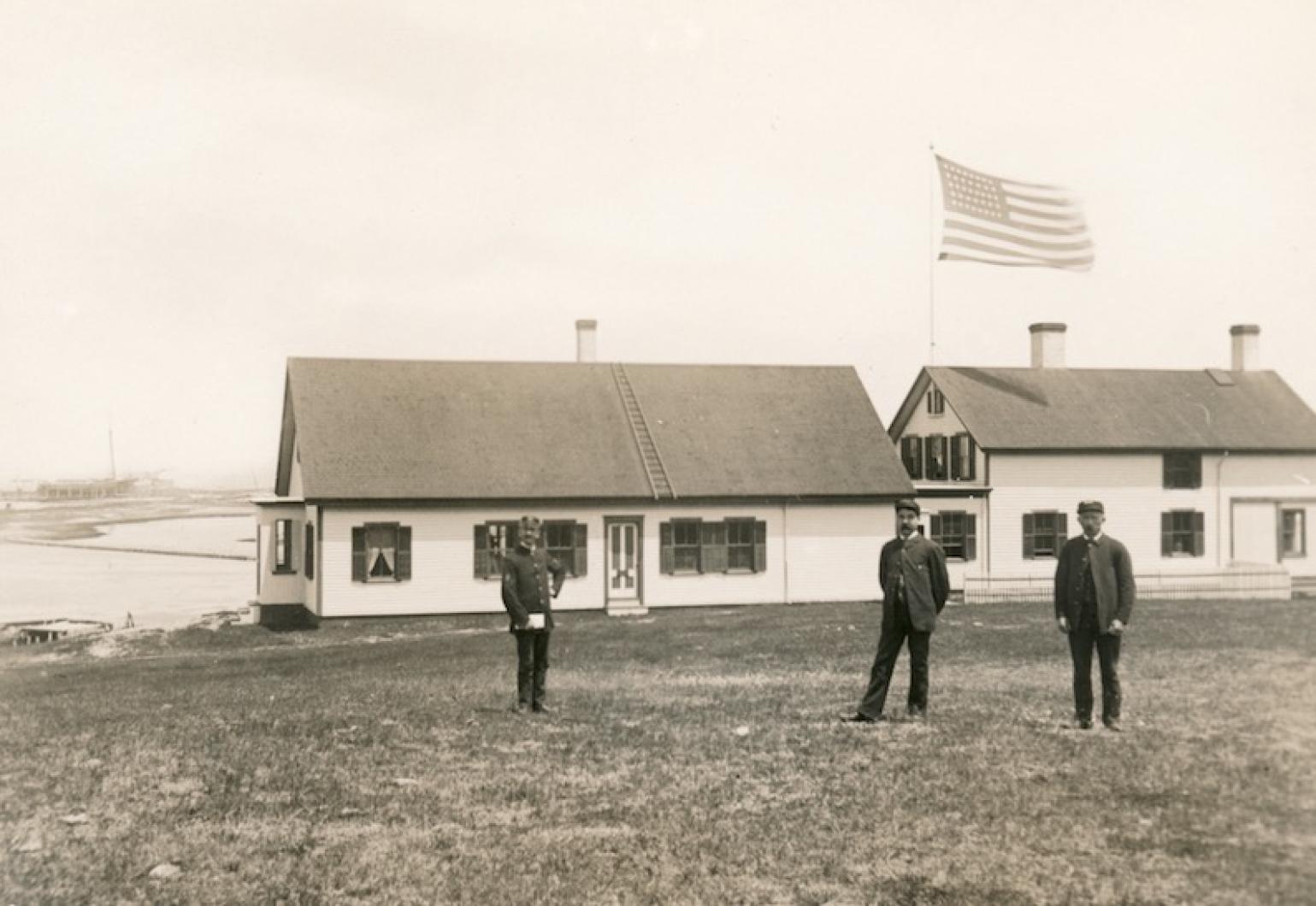

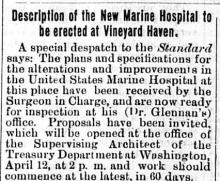
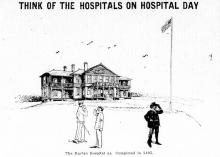
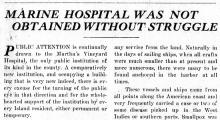
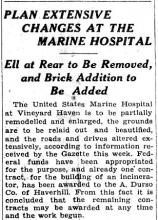
Comments